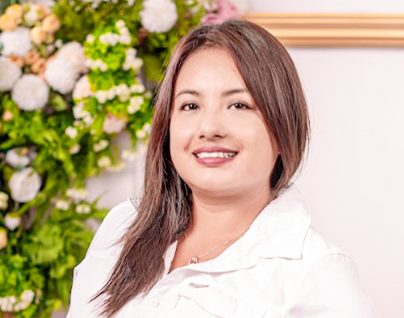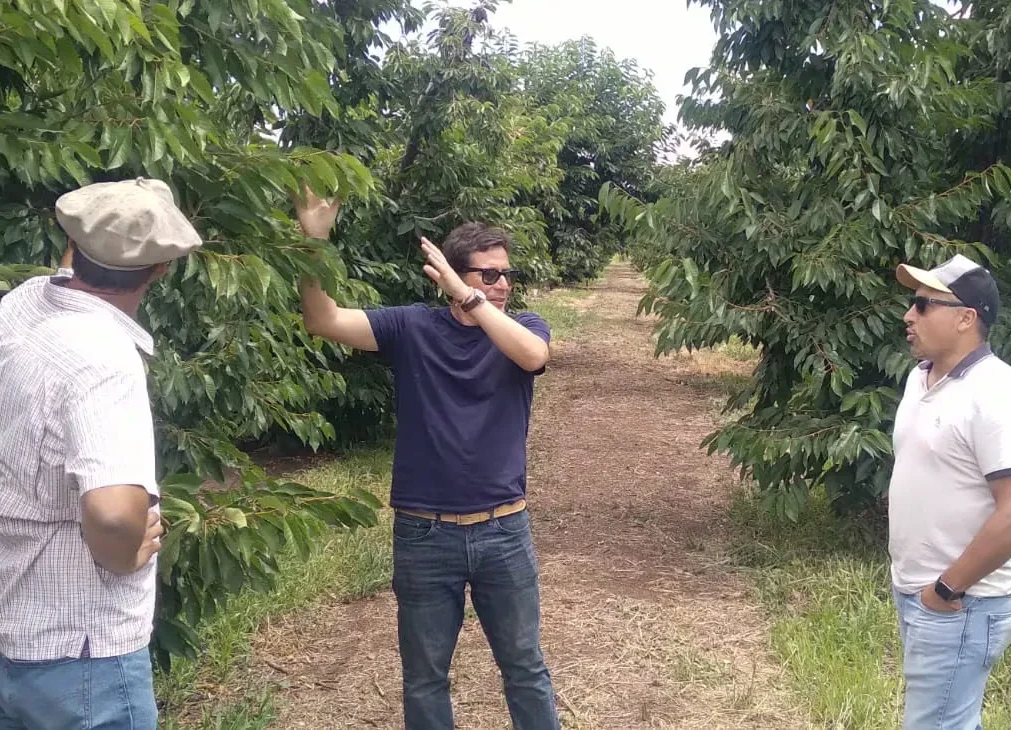The agricultural management formula that will produce a competitive Peruvian cherry on international markets is a story that has been unfolding for just under a decade. Along the coast and in the highlands of the country, large and medium-sized companies have conducted various trials, combining different varieties and rootstocks in hopes of finding the ideal combinations.
The results are not yet satisfactory, but everything suggests that it is only a matter of time before the goal is achieved. The following lines present some experiences from companies sharing their progress and setbacks in localizing this crop.
The very interesting prices are what keep different Peruvian companies focused on cherries. The feeling of failure, as in much of agricultural history, does not scare them, and they are already several years behind in the quest to domesticate the crop.
The main obstacle is of a genetic nature, due to the varieties used so far which require a chilling period of at least 400 hours or more. Some companies have chosen to explore the coast, others the highlands, and, finally, most both areas. Everything indicates that the process of adaptability is not yet complete, but there are expectations for genetic progress with varieties requiring fewer chilling hours that will enter Peruvian fields for trials in less than a year.
"The kaki requires 200 chilling hours and has produced well in the countryside. This gives us hope for the new genetics that have started being proposed to farms," comments Gabriela Mercedes Crespo, Head of Research and Development at Agualima, a company conducting trials in Trujillo and evaluating new varieties that have appeared on the market.
 Image 1: Gabriela Mercedes Crespo.
Image 1: Gabriela Mercedes Crespo.
What is the state of progress in the country? Mercedes Crespo believes that we are still in the process of adaptability at the experimental plot level: management experience, validation of varieties and rootstocks, fruit set percentage, among other field processes. Commercial scalability trials are still a long way off.
According to Fresh Fruit, for now, none of the leading companies in their exploratory progress, many of which are under a veil of secrecy, have sent samples of this exquisite fruit to any buyer country, particularly since it is highly appreciated in China.
In recent years, trials have focused on varieties imported from nurseries and offered to local growers, including Lapins, Brooks, Santina, and Sweetheart, with rootstocks such as Colt, Maxma 14, and Maxma 60 identified as the best for our climatic and soil conditions.
Breeders and genetic programs have suggested other variety options with lower chilling requirements. There is the Royal variety family from Zeiger’s selection program (PMG), which is said to be further advanced in the propagation of its genetic material.
Regarding field trials and their progress, a general phenology of the crop has been established. From January to April, plant growth, shoot formation, and bud differentiation are observed; from August onwards, flowering, fruit set, and fruit growth are seen. Harvesting seems to vary depending on the geographic area.
For the highlands, it would be November and December, while the coast has seen harvests between December and January. This phenology does not yet establish differences depending on the varieties. Looking geographically, on the coast, trees grow quite well, although fruit production presents issues. Similarly, although cherry trees bloom much better in the highlands, fruit set is complicated due to very low relative humidity.
"The coast of Peru is very warm, but it always is; it’s not cold but has enough humidity to ensure fruit set. The highlands also have adequate cold conditions, but drier and hotter springs can affect fruit set. For fruit maturation, a temperature fluctuation of 15°C is required during the maturation period.
In any case, a strong thermal fluctuation of around 5°C - 8°C in the morning to 20°C - 25°C in the afternoon is necessary so that there is also a buildup of sugars and thus pigmentation of the cuticle walls, which allows for the red color needed for export. For this reason, it is not easy for them to achieve results," explains Chilean grower and cherry specialist Jorge Astudillo, who has been a proponent of early cherries in Ovalle, Coquimbo region in Chile.
Indeed, this area of the planet "competes" with Mendoza, Argentina, as the earliest production zone in the southern hemisphere.
The final goal of Peruvian producers is to obtain a fruit with uniform color (mahogany red), a brix above 17, and uniform sizes over 28 mm. Although it is not yet clear when this goal will be achieved, all actors and field consultants believe it is only a matter of time before Peru enters the commercial cherry game.
Highland Trials
The main companies exploring the crop in the Andean region are Camposol, Complejo Agroindustrial Beta, Proagro, Agrokasa, and others. The primary challenge faced by companies that have conducted their trials in the Andean zones is that there are usually more than 1,000 hours of chilling throughout the year, which is problematic because cherry trees do not require that much cold.
Since low temperatures are effective for the crop only between May and July, experiments have been conducted with the installation of macro-tunnels at specific phenological times, which implies a greater investment. Another disadvantage is that the relative humidity above 50% required for the crop is not available due to Peru's distance from the sea.
Much of the experimentation in the country in recent years has been concentrated in Jauja (Junín), as it is believed to have a more temperate climate, especially with the Santina variety.
One of the companies heavily involved in research is Camposol, which, after selecting from 43 areas in Cajamarca, Ancash, Junín, Ayacucho, and Arequipa, located its plot in Fundo San Juan Yanamuclo of the Instituto Regional de Desarrollo (IRD) Sierra in 2020. This site is in the province of Jauja and belongs to the Universidad Nacional Agraria La Molina (Unalm), as announced during the Unalm Research Week 2022.
At that time, the company was experimenting with macro-tunnels and other covers, as facing chilling hours or a frost that could damage fruit quality is not the same thing.
Cherry specialist Jorge Astudillo comments that, in this scenario of limiting environmental factors, Peru will need to invest more in technology. "In the end, they will need to invest in black nets, shading nets, and humidification systems in the highlands to counteract the lack of sea influence. It must be considered that even new varieties need a minimum amount of chilling," he says.
Another experience in the Andes is Proagro, which began its trials in March 2020 at La Campiña de Arequipa (located 2,300 meters above sea level), with an average of 350 hours of chilling accumulated annually, which is somewhat milder. Carlos Téllez, the company's operations manager, notes that there was little progress in some cherry trials in the La Joya area, also in Arequipa but closer to the sea.
 Image 2: Carlos Tellez.
Image 2: Carlos Tellez.
For this reason, he decided that Proagro’s trials should be conducted in La Campiña, where temperatures are lower, allowing for better flowering and fruit set.
The varieties they started working with are Lapins, Brooks, Santina, Sweetheart, Skeena, and Regina, on rootstocks Maxma 14 and Colt (all varieties are tested on both rootstocks). "Why did we choose these varieties? We simply wanted to try all the varieties we had available at that time. In particular, we were interested in Lapins because, among all the conventional varieties, it requires the fewest hours of chilling," he explains.
The main limitations encountered in the area, he explains, have been low relative humidity and high radiation. He notes that they have just started conducting the necessary tests to address both situations, including the use of nets.
"We remember that last year there was the El Niño phenomenon, and although the southern region, particularly Arequipa, was not severely affected, we still experienced somewhat higher temperatures in the winter season, so the accumulation of chilling hours was not as expected. Therefore, we only maintained the harvest but did not make many investments, and this year we are resuming the trials," he explains.
In the specific case of the lack of humidity, he comments that they will study the use of misting systems under the nets, as seen in Chile and Spain, to increase the relative humidity during critical times when cherries require it. "It involves a structure, like an overhead irrigation system, with misting nozzles that, based on the programmed time and frequency, emit micro-droplets onto the plant.
The idea is to have tiny droplets in the air, increasing the relative humidity," he explains.
He also states that this solution should be used during the pollination phase, otherwise, low relative humidity affects the growth of the pollen tube and, consequently, the vitality of the pollen. "There can be fertilization in the flowers, but not at the necessary level if there is not much pollen," he adds. With the plants now three years old, Téllez says that this year they expect the flowering and fruiting of the different varieties under trial, aiming for a harvest between October and November.
"This year we will be able to select the varieties that still offer potential for further research. We will probably discard at least half of the varieties, leaving three or two. We will assess everything at the end of the season," he explains.
Coastal Trials
The advantages of production on the coast include lower investment costs, greater post-harvest maneuverability, and proximity to logistics operators for fruit export. While in the highlands the investment for one hectare can exceed $80,000 due to the use of protections against rain and frost, on the coast it reaches $35,000, says Mercedes Crespo from Agualima.
In addition to the issue of chilling hours, there is also the problem of high radiation and high temperatures during the summer phase when the dardlets, where flower buds form, should be developing. However, the specialist notes that during these periods, the plants grow more and become more vigorous. In response to radiation, she says they are testing the use of solar filters.
Regarding the coast, Mercedes Crespo reports having observed in other estates that the Lapins variety is the only one that has so far produced fruit, but they are still small, about 22 mm per fruit, which is not yet close to commercial standards. "Brooks also reaches flowering, but fruit set is compromised and there is fruit drop. However, I saw some four-year-old Zaiger program plants in Chincha with formed dardlets," she comments.
She further explains that Agualima will continue with its experimentation and hopes to gain access to new genetic material that requires less chilling time. For now, they prefer to continue on the coast due to the limitations present in the Andean zones.
"I have seen that both in Ancash and the Mantaro Valley, the conditions for cultivation are very good due to the accumulation of chilling hours, but there are other limitations related to the percentage of relative humidity, which is only 30% during flowering. This hinders fruit set because the pistils dry out very quickly, and October and November rains also affect the fruit, causing splitting," she says.
In any case, she notes that some companies use an ethylene inhibitor to make the flower stigma receptive for a longer period. "The longer the flower is receptive, the greater the chance of increasing the fruit set percentage," she adds.
New Genetics
Regarding new genetics, Mercedes Crespo states that in most cases, local nurseries have started the process of multiplying new cherry material from breeders and genetic programs for plant sales. According to her, some of these advertise varieties with slightly more than 200 hours of chilling requirement, while current varieties exceed 400 or 500 hours.
In this context, she mentions Agrogénesis, which has Bloom Fresh varieties, the El Tambo nursery in alliance with ANA de Chile (associated with the University of Bologna, Italy), and the Perufrut nursery with Agromillora, among others. Each has a different offer, but it is expected that next year they will start offering cherry plants.
There are some varieties that are not self-fertile, which could apparently generate some limitations in the crop because they require pollinators. However, Mercedes Crespo emphasizes that she was invited to visit a demonstration plot in Chincha with these types of plants from Perufrut, which works with Zaiger varieties and Agromillora rootstocks, and she was surprised to see plants with dardlets. The field manager even told her that last year, in the second year of growth, each plant produced 50 fruits.
Carlos Téllez recounts that last year he visited cherry orchards in Spain. In this country, he was able to observe several Bloom Fresh varieties and those from the University of Bologna with lower chilling requirements. He says both are very interested in working with some of the observed varieties and are in negotiation to gain access to the genetic material.
Karen Sagredo, an international consultant for cherry crops, emphasizes that it would indeed be easier to adapt the crop if we had varieties with lower chilling requirements that allow us to expand the geographical areas for trials. "In general, I would suggest that ideally, they should be self-fertile varieties, but if they are not, it is not exclusive," she says.
The goal is to have varieties with good yield because we will face limitations due to cold. If this is combined with the fact that these are varieties that sunset late, the result will be negative for the company," she suggests.
The Earliest Cherries on the Market
Among the early open varieties produced in Chile, the Brooks variety stands out for its positioning in the Coquimbo region, which was harvested on October 13 last year. Among the authorized varieties, Bloom Fresh has also achieved ultra-fast results, such as the Cheery Cupid™ (IFG Cher-ten) harvest on October 15.
This genetic selector has also achieved early results in Chile with Cheery Crunch™ (IFG Cher-tre), Cheery Moon™ (IFG Cher-sette), Cheery Nebula™ (IFG Cher-otto) varieties and also has in its portfolio Cheery Glow™ (IFG Cher-sei), an early bi-color variety that also fetches good international prices due to its striking hue.
In other programs, Royal Lynn and Royal Hazel from Zeiger also stand out, with harvests in week 42 in Mendoza, Argentina. Sweet Aryana™ (cv. PA1 UNIBO) and Sweet Gabriel™ (cv. PA3UNIBO) are the first varieties developed by the University of Bologna, with good results in Chile, while Nimba cv. and Pacific Red cv. are from the breeder SMS (California, USA).
Source: Redagrícola
Images: Redagrícola
Cherry Times - All rights reserved













